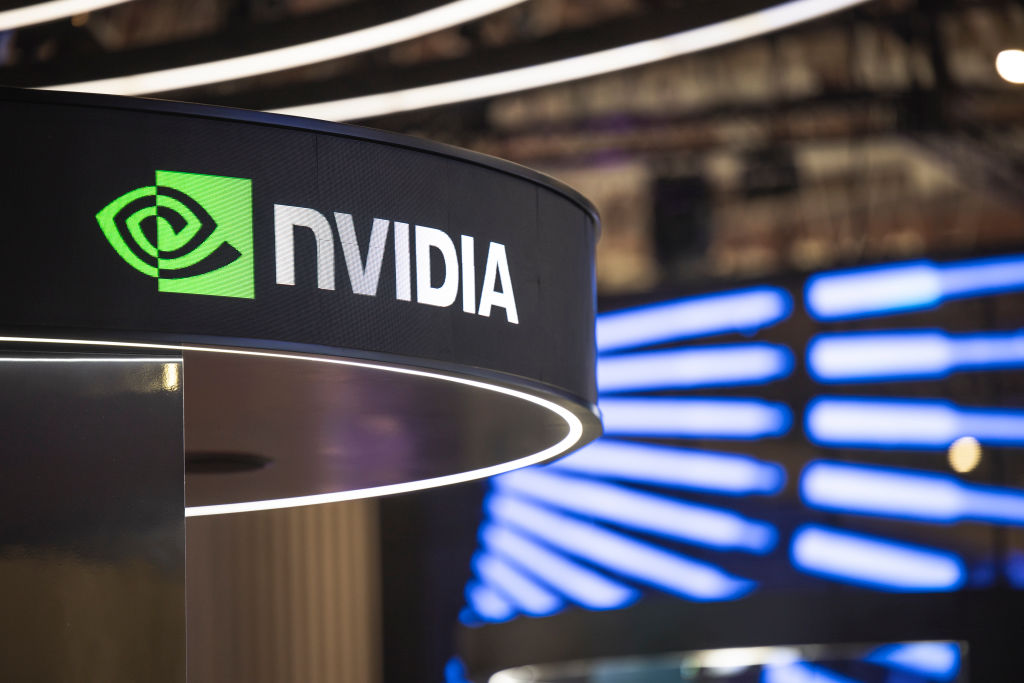Put Cash in Your Pocket
With the global economy booming, it's easier than ever to find yields of 7% or more.

Turmoil in financial markets offers opportunities if you need more investment income. When stock, corporate-bond or mortgage-debt prices fall, yields escalate. Property-owning real estate investment trusts, for example, lost 21% between early February and mid August, and their average yield rose from 3.3% to 4.4%. Energy royalty trusts and business-development companies have also had it rough lately -- but their yields have not.
Market discomfort masks the fact that a global boom is feeding the growth of corporate profits, rents, real estate values and energy prices. So businesses should continue to generate impressive payouts, and that leads to solid yields, which are the past 12 months' cash distributions divided by a security's price. Current returns of 7% to 10% are within reach, and you can get these yields without taking extraordinarily high risks. One high-yielding investment with heightened risks, however, is corporate junk bonds. Trading volume of low-rated corporate debt dried up over the summer, and this isn't a market in which you should be prospecting right now. Instead, check out these ideas.
Closed-end funds
More than 100 closed-end funds yield 8% or better. Closed-ends issue a fixed number of shares, which then trade just like stocks. The market value of the stocks is rarely the same as the value of the fund's assets, or net asset value per share. Most closed-ends can deliver such juicy yields by borrowing money at short-term interest rates to buy additional higher-yielding securities. But this is tricky stuff and can be dangerous if short-term rates climb more quickly than long-term rates. Moreover, shares of high-yielding closed-ends often sell at a premium to their underlying assets. That, too, adds risk.
From just $107.88 $24.99 for Kiplinger Personal Finance
Be a smarter, better informed investor.

Sign up for Kiplinger’s Free Newsletters
Profit and prosper with the best of expert advice on investing, taxes, retirement, personal finance and more - straight to your e-mail.
Profit and prosper with the best of expert advice - straight to your e-mail.
You can limit the danger, however, by looking for closed-ends that are well diversified, trade at a discount to NAV and earn enough to cover their dividends. A sound choice is Eaton Vance Senior Floating-Rate Trust (symbol EFR). The fund, which employs leverage to the tune of nearly 40% of its assets, invests in loans that banks make to junk-rated companies. Most of the loans are secured senior debt, which means that in a pinch, the banks get paid before holders of bonds or other subordinated debt. And because the loans are of the floating-rate variety, interest rates reset frequently -- typically every six months or so. That insulates the fund from rising interest rates and gives it more income to distribute when rates are heading up. As of mid August, the fund traded at about $16.50, representing a 6% discount to NAV, and yielded 9.5%.
Lenders to business
More than any other high-yield category, business-development companies feel the conflict between strong business growth and the sort of investor jitteriness that threw the bond market into a tizzy over the summer. BDCs lend to -- and sometimes take equity positions in -- private companies of middling quality at high interest rates. Like a REIT, a BDC must distribute substantially all of its net income as dividends. Most BDC stocks fell about 15% between June and mid August. The number of delinquencies, although low, is edging up -- but hardly enough to imperil generous dividends that result in yields greater than 10%.
Older BDCs, such as Allied Capital and American Capital Strategies, have a lot of experience judging credit risk. They reject more than 90% of the would-be borrowers who approach them. Allied (ALD) has raised its dividends 6% over the past year, and at $30, it yields 8.8%. American Capital (ACAS) has boosted its payout ten straight quarters and 11% over the past year. At $40, it yields 9.1%.
As its name suggests, Technology Investment Capital (TICC) focuses on tech firms. Specifically, it provides loans to 25 small-to-midsize tech companies at interest rates averaging 12%. Its chief executive, Jonathan Cohen, formerly managed Royce Technology Value fund, and did it well. He started Technology Investment Capital in 2003 and took it public in 2004. At $13, the stock yields 11.3%. At that price, the stock trades for about 6% less than the value of TIC's assets, which makes it cheaper (at least by this measurement) than most other BDCs. Consider that compensation for the extra risk of its single-sector focus.
Snappy shippers
Someday, the oceans will be awash with tankers and freighters, and cargo rates will plunge. But that won't happen this year -- or the next. "We'll have tight capacity through the rest of '07 and '08," says Omar Nokta, a shipping analyst at Dahlman Rose & Co., an investment-banking firm.
Today, shipping is a global growth industry with the reliable cash flow of a public utility. To meet strong demand, companies are buying more ships or acquiring privately held fleets. But the secret of this previously obscure corner of the stock market is out. A year ago, we recommended bulk commodity carrier Genco (GNK) and containership line Seaspan (SSW). Since then, their shares have soared 145% and 44%, respectively, dropping yields to about 5%.
Better choices for yields today are Double Hull Tankers (DHT), which is headquartered in the Channel Islands, and New York City-based Eagle Bulk Shipping (EGLE). Double Hull, at $15, yields 10.1%, while Eagle, at $24, yields 8.0%. Shares of Eagle rose 15% one day in July, after the company announced plans to boost its fleet from 23 ships to 49 in seven years.
Energy income trusts
Royalty trusts resemble BDCs and REITs in that they aren't taxed as long as they hand over practically all their earnings to investors. The trusts deliver monthly income that varies with the price and volume of oil-and-gas production. Because of slumping natural-gas prices, shares of some trusts have fallen by as much as one-third from their 2006 peaks. That means you can find stocks with unusually generous yields.
It's prudent to spread your money among different kinds of trusts. Gas-only trusts, such as San Juan Basin Royalty Trust (SJT) and Hugoton Royalty Trust (HGT), look like bargains. San Juan recently traded at $33, for a yield of 7.3%, based on its past 12 monthly payouts. Hugoton, at $24, also yielded 7.1%. Dividends have fallen over the past year. But if a cold winter drives up gas prices, distributions will rebound, and so may share prices.
For a rich yield from crude-oil profits, it's hard to beat the payouts from BP Prudhoe Bay Royalty Trust (BPT). BPT passed out more than $7.50 a share over the past four quarters. At a recent price of $68, down from a July 2006 peak of $90, that's an 11.9% yield. The trust, which has an interest in BP's Alaskan output, pays $19 to produce and ship a barrel of oil. The difference between that cost and the price of oil (recently $71 per barrel) is distributed to investors (referred to as unit holders) -- no muss, no fuss, no exploration or political risks.
"Emerged" bonds
Countries such as Brazil, Mexico and Russia still wear the emerging-market label. But these nations are growing vigorously, and the chance that their economies will implode, as Russia's did in 1998 and Argentina's did in 2001, is becoming increasingly remote. Despite solid price gains in recent years, bonds issued by developing nations still yield considerably more than U.S. Treasury bonds do. And with the feeble dollar likely to weaken further, holders of emerging-markets bonds can benefit from currency-translation gains.
For almost everyone, the only rational way to invest in "emerged" bonds is through a fund. A solid choice is T. Rowe Price Emerging Markets Bond (PREMX; 800-541-8803). The no-load fund returned 17% annualized over the past five years to August 1 and a more-typical 9% annualized over the past ten. It yields 7.3%. The fund is well diversified, holding debt from more-advanced emerging nations (such as Brazil, Mexico and Russia), as well as IOUs from such exotic locales as Vietnam and -- believe it or not -- Iraq.
Among closed-end funds, a wise choice is AllianceBernstein Global High Income (AWF). With shares selling recently at about $12.50, they traded at a 10% discount to NAV and yielded 8.5%. Over the past five years, the fund returned 19% annualized on its assets, and over the past ten, it gained 11% annualized. At last word, the fund was 16% leveraged, a relatively low figure by closed-end standards.
Overlooked REITs
Because of steady appreciation in recent years, established REITs in the four main "food groups" -- apartments, offices, hotels and malls -- generally aren't paying enough to satisfy yield-hungry appetites. Keep your REITs if you're sitting on substantial long-term gains. But if you're hunting for fat yields, you'll have to walk the fringes of the real estate industry.
First Industrial Realty (FR) is the nation's largest developer and manager of warehouses and industrial parks. It also operates in Canada and is starting to enter Europe. The stock recently traded at $41, down 11% so far in 2007, and yields 7.0%. Like most REITs with yields well above the average (recently 4.5%), First Industrial carries a lot of debt. But the Chicago-based REIT owns so much land that it can always sell some, if necessary. Moreover, unlike payouts from other REITs, which are usually taxed at high, ordinary tax rates, only 20% of the income from First Industrial is taxed at the regular rate. As a result, First Industrial's 7.0% yield is like getting 8.5% from most other REITs.
REITs that own medical properties are also generous yielders. That's because their properties are less desirable for redevelopment than, say, a vacant shopping plaza would be. A dozen REITs with similar names develop and own nursing homes, hospitals and doctors' offices. They've lost about 15% as a class in 2007, but that's no worse than other types of REITs. You can throw a hospital blanket over Health Care REIT (HCN, $37), Health Care Property Investors (HCP, $28) and Nationwide Health Properties (NHP, $26). Yields range from 6.1% to 7.0%.
Preferred stocks
Technically, these hybrid securities are stocks. Preferreds, which offer a fixed dividend, currently yield 7%, on average, with triple-A-rated issues yielding 6.2% and C-rated preferreds paying more than 8%. Some preferred stocks never come due, while others can be called, or redeemed, like a bond. Some preferreds, called trust preferreds, pay interest that's taxed at ordinary rates, but traditional preferreds qualify for the 15% maximum federal income tax on dividends. Check with the issuer if you're unsure. You can find an extensive free list of preferreds at QuantumOnline.com.
An attractive preferred sports a good yield, has a high credit rating, qualifies for favorable tax treatment and cannot be called for quite some time. Consider, for example, the A-rated Bank of America 6.2% preferred (BACXP). At $25, the stock yields 6.2%. If you're willing to take on more credit risk, the Arch Capital Group 8.0% preferred (ARHprA), trading at $25, yields 8.0%. Neither preferred can be called before 2011, and dividends from both receive favorable tax treatment.
Profit and prosper with the best of Kiplinger's advice on investing, taxes, retirement, personal finance and much more. Delivered daily. Enter your email in the box and click Sign Me Up.

Kosnett is the editor of Kiplinger Investing for Income and writes the "Cash in Hand" column for Kiplinger Personal Finance. He is an income-investing expert who covers bonds, real estate investment trusts, oil and gas income deals, dividend stocks and anything else that pays interest and dividends. He joined Kiplinger in 1981 after six years in newspapers, including the Baltimore Sun. He is a 1976 journalism graduate from the Medill School at Northwestern University and completed an executive program at the Carnegie-Mellon University business school in 1978.
-
 Dow, S&P 500 Slip on December Rate Cut Worries, Nvidia Boosts Nasdaq: Stock Market Today
Dow, S&P 500 Slip on December Rate Cut Worries, Nvidia Boosts Nasdaq: Stock Market TodayNvidia became the first company ever to boast a $5 trillion market cap, but it wasn't enough to lift the Dow and the S&P 500.
-
 Where You Choose to Stash $100k Now Comes with a Big Opportunity Cost
Where You Choose to Stash $100k Now Comes with a Big Opportunity CostThe Fed recently cut rates. Here's where to maximize your savings while rates remain higher.
-
 Best Banks for High-Net-Worth Clients
Best Banks for High-Net-Worth Clientswealth management These banks welcome customers who keep high balances in deposit and investment accounts, showering them with fee breaks and access to financial-planning services.
-
 Stock Market Holidays in 2025: NYSE, NASDAQ and Wall Street Holidays
Stock Market Holidays in 2025: NYSE, NASDAQ and Wall Street HolidaysMarkets When are the stock market holidays? Here, we look at which days the NYSE, Nasdaq and bond markets are off in 2025.
-
 Stock Market Trading Hours: What Time Is the Stock Market Open Today?
Stock Market Trading Hours: What Time Is the Stock Market Open Today?Markets When does the market open? While the stock market does have regular hours, trading doesn't necessarily stop when the major exchanges close.
-
 Bogleheads Stay the Course
Bogleheads Stay the CourseBears and market volatility don’t scare these die-hard Vanguard investors.
-
 The Current I-Bond Rate Is Mildly Attractive. Here's Why.
The Current I-Bond Rate Is Mildly Attractive. Here's Why.Investing for Income The current I-bond rate is active until November 2025 and presents an attractive value, if not as attractive as in the recent past.
-
 What Are I-Bonds? Inflation Made Them Popular. What Now?
What Are I-Bonds? Inflation Made Them Popular. What Now?savings bonds Inflation has made Series I savings bonds, known as I-bonds, enormously popular with risk-averse investors. How do they work?
-
 This New Sustainable ETF’s Pitch? Give Back Profits.
This New Sustainable ETF’s Pitch? Give Back Profits.investing Newday’s ETF partners with UNICEF and other groups.
-
 As the Market Falls, New Retirees Need a Plan
As the Market Falls, New Retirees Need a Planretirement If you’re in the early stages of your retirement, you’re likely in a rough spot watching your portfolio shrink. We have some strategies to make the best of things.